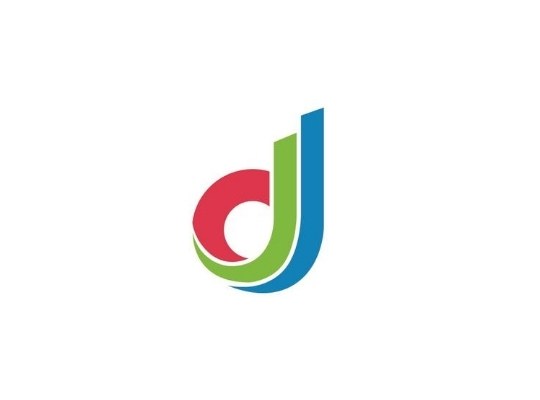Digital signage expanding into new verticals, international markets

The application of digital signage on billboards, in casinos or as the driver of a breakfast menu isn’t new. Though those verticals are still experiencing staggering growth, digital signage is also starting to mark new territories, such as internal corporate communications and healthcare and educational institutions, as well as in some emerging international markets.
In fact, Stephanie Gutnik, director of Business Development at BroadSign International, recently talked about the importance of expanding into new verticals in order to survive the industry’s impending shakeout. Early responses to digital signage in these newer verticals have been favorable.
Internal communications
Take, for example, Enplug, which recently published a case study showing how much digital signage is making an impact on media intelligence company Meltwater.
Enplug’s Yuliya Maystruk said Meltwater’s platform helps build company culture as part of its internal communications strategy, allowing employees to stay on top of online conversations, extract relevant insights and drive brand perception.
Enplug deployments, for example, use screens throughout a company’s headquarters, which showcase announcements, social media posts, news, motivational memes and more.
Maystruk said the Meltwater case study shows these strategically placed messages have fueled sales productivity.
“It keeps the company’s employees motivated and engaged, and it’s also very easy to share internal messaging. It’s just a better way to engage employees,” she said.

More companies are adding digital signage platforms to their internal communications structures. (Photo courtesy of Enplug).
“People are looking for an easier way to manage an abundance of content and digital signage is the way to go,” Maystruk said. “Internal communications teams and employee engagement teams are looking for this.”
Higher education space
Some universities are also fitting digital signage platforms into their campus space in order to better communicate with employees, students and visitors. According to Spencer Graham, manager of InfoStations at West Virginia University and vice chairman of the Digital Signage Federation board, wayfinding has been the top application for universities.
At West Virginia, digital screens are placed throughout campus to communicate arts and entertainment events, weather, sports schedules and more. There are currently more than 150 screens on WVU’s campus and Graham expects 200 by the end of this year.
The challenge for college deployments has been overcoming the silo culture that tends to exist on campuses, stemming from their variable departments and schools.
“You to have someone committed to content update. We decided from the beginning we’re going to control what we needed to control. If we’re spending this much, we need to make sure it’s used properly,” Graham said. “Every project is unique on campus, but they have to use our model in order for it to work. That was the deal.”
Prior to this deal, more than 90 percent of the digital content was decentralized.
“We had to blow it up. There was no continuity in equipment or in branding,” Graham said. “We had to put a content management system in place to force people back to the mother ship.”
Graham said digital signage fits higher education well because it includes a unique audience for four-plus years, and also allows for emergency messaging and messaging that can build relationships between the campus, its culture and its students.
“Higher education is very unique, but it’s fun,” he said.
West Virginia’s latest project is the installation of a video wall in the university’s visitor center. Graham said more than 1,000 prospective students and their parents visit the center each week, so his team wanted to grab their attention and build their excitement once they were on campus. One way of doing that was to flash the prospective students’ name on the screen once they entered, with a “Welcome John Doe” message.
Graham also said digital signage would work well to acknowledge a university’s donors, replacing the custom brass plaques introducing donors in 200 words or less.
“Donor relations is one of our biggest areas of interest. These people are so great to our campus, why limit their description to 200 words. Get their picture and bio on a digital sign and get their names out there,” Graham said. “That’s the great thing about these screens – why limit their information?”
Emerging international markets
The newly-announced Digital Signage Federation Global Digital Out-of-Home Council will launch its European Council in May, but Asia and Europe are not the only markets leveraging the growing digital signage industry. Latin American has four markets in particular to keep an eye on — Mexico, Brazil, Columbia and Argentina — according to Luis Maria Gonzalez Lentijo, CEO of Convergencia Digital Signage headquartered in Buenos Aires.
Full-service, he adds, is the “center of the hurricane” in these emerging markets.
However, these markets have to navigate infrastructure challenges other, more mature markets do not, namely in terms of bandwidth, electrical currency and logistics. The main issue, Lentijo said, is with the IT connection. The biggest stores in the biggest markets work without issue. The smaller ones do not.
“You need to be successful in 100 percent of your stores if you’re a big bank company or petrol company,” he said.
The four strongest markets listed above each have their own challenges as well. In Brazil, for example, digital signage is growing faster in smaller companies. McDonald’s tried to roll out a digital signage system and initially failed.

Latin America, especially Mexico, Brazil, Columbia and Argentina, is embracing digital signage. (Photo courtesy of Wikimedia).
Mexico “has a lot of displays, but not good software. That’s a bad sign. No one wants to buy more displays,” Lentijo said.
Latin America as a whole should be taken seriously by this industry, he adds.
“It is an immature market and everybody knows the bad cases, like McDonald’s. It’s important to take it slow and do it right and look at the best practices,” Lentijo said. “If we do these things well, our industry grows.”






